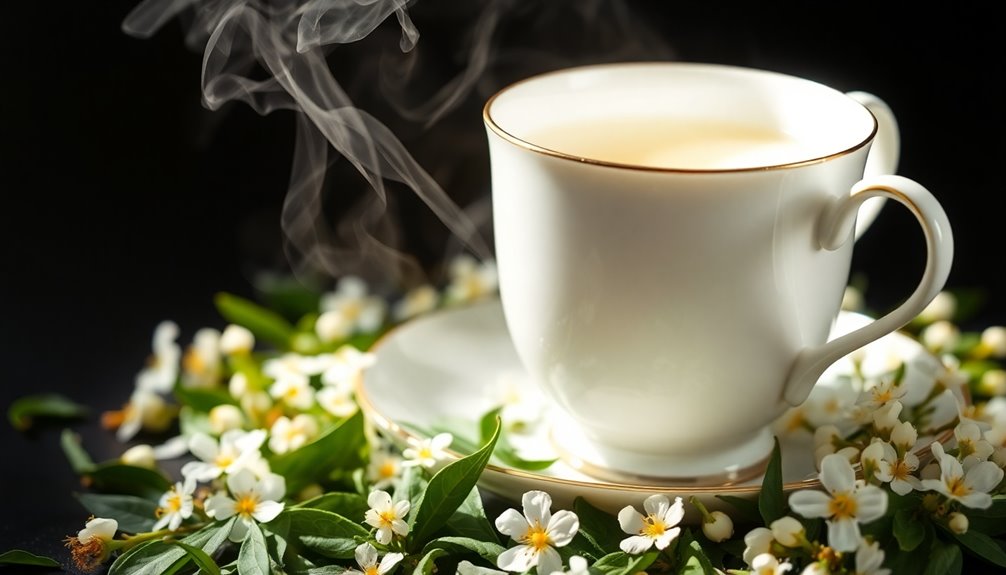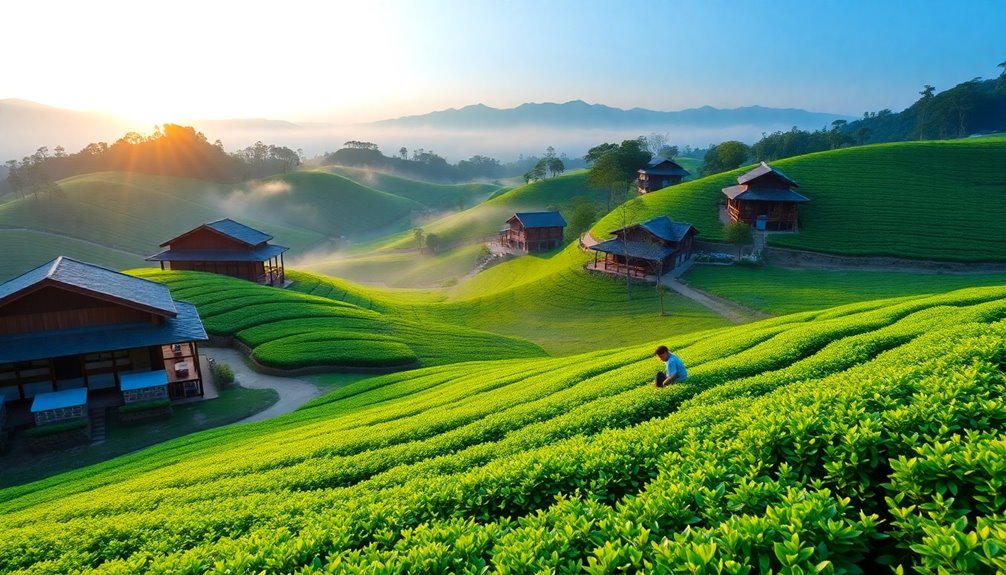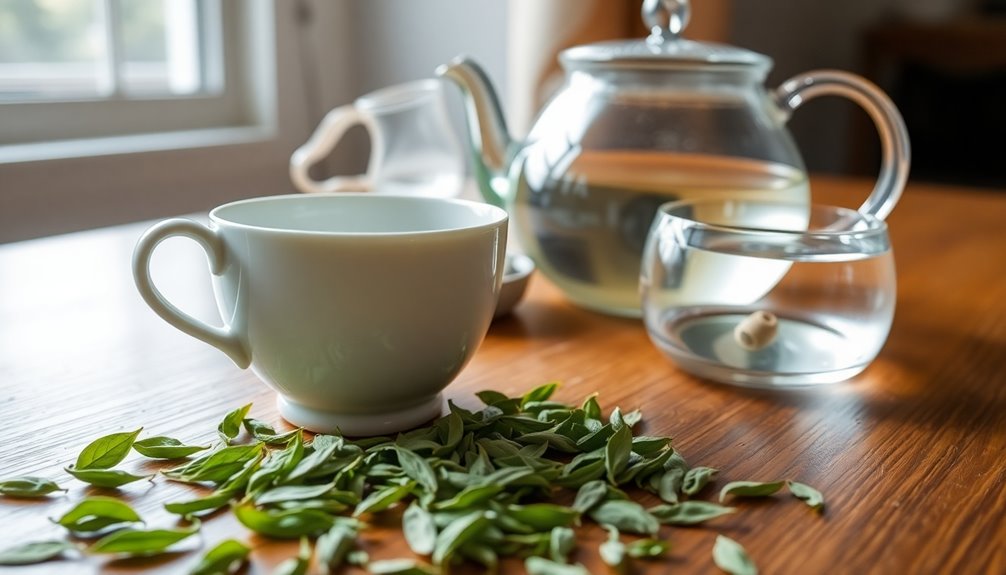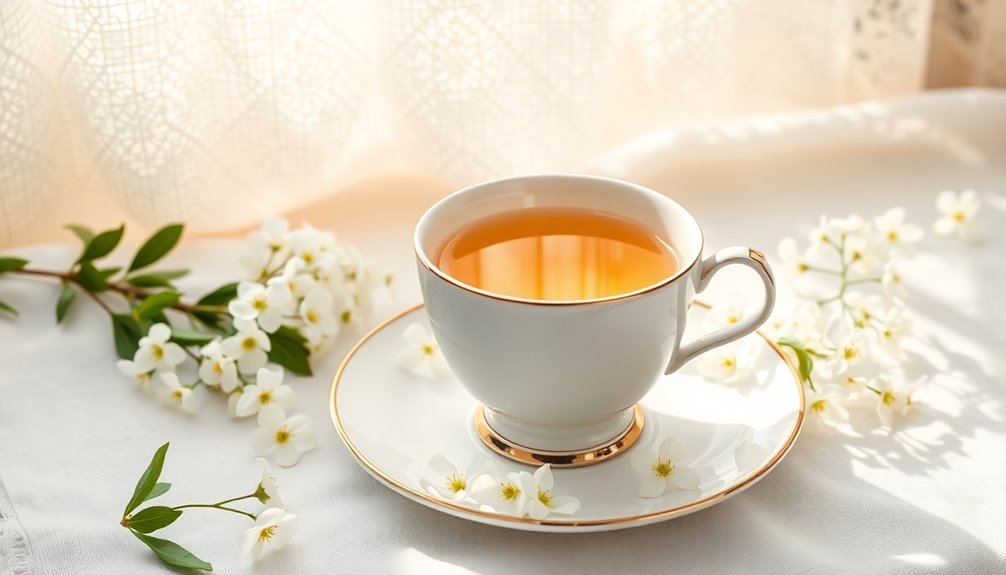White tea is considered the "Champagne" of teas mainly because it's rare and has a delicate flavor that many love. It's made from young leaves and buds, mainly sourced from Fujian, China. The best-known varieties, like Silver Needle, are hand-picked in spring, adding to their exclusivity. This tea has a light, floral aroma and subtle sweetness, creating a luxurious drinking experience. Its limited harvest and minimal processing mean each cup is special, just like Champagne. So, if you're curious about how it's made and its unique qualities, you've got more to discover!
Key Takeaways
- White tea is rare, derived from young leaves and buds, enhancing its exclusivity similar to Champagne.
- Traditional processing methods preserve delicate flavors and aromas, making it a luxurious choice for connoisseurs.
- Limited harvest seasons in Fujian, China, contribute to its premium status and scarcity in the market.
- The Silver Needle variety, made from hand-picked buds, is among the most prized, showcasing superior quality.
- Increased demand and health benefits elevate white tea's reputation, paralleling the allure of fine Champagne.
Introduction
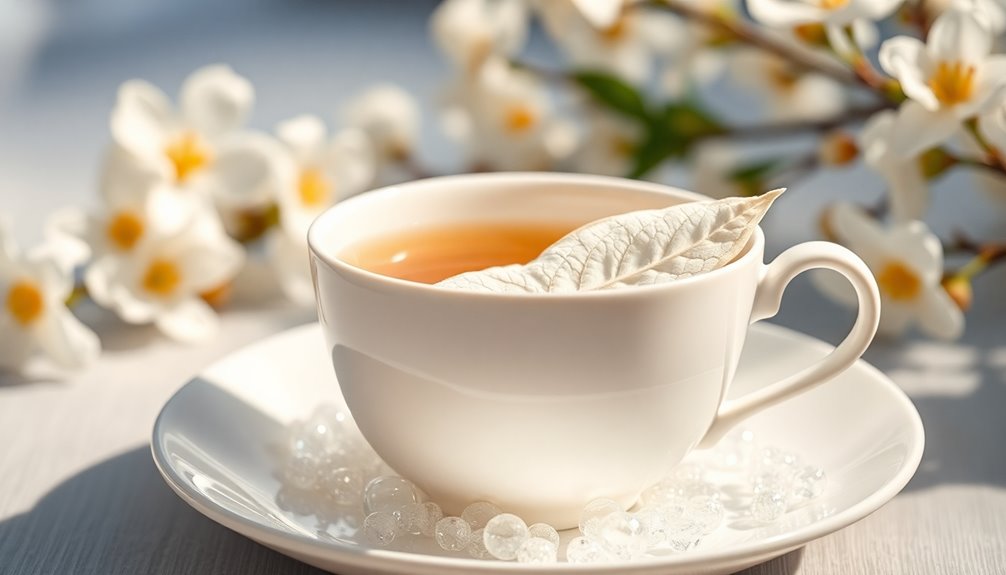
White tea, often dubbed the "Champagne" of teas, stands out for its exclusivity and delicate flavor profile. This special tea comes from young leaves and buds, making it a rare treat.
Just like Champagne, which is known for its rich traditions and specific regions of production, the finest white teas, such as Silver Needle and White Peony, are carefully harvested, mainly in Fujian, China. These areas preserve traditional processing methods that enhance the tea's unique qualities.
When you sip white tea, you'll notice its light, floral aroma and subtly sweet flavors. It's no wonder that connoisseurs appreciate it just as much as premium sparkling wines.
The processing techniques focus on keeping the tea fresh and pure, allowing the natural flavors to shine. You'll also discover health benefits associated with white tea, adding to its appeal.
Historical Significance of White Tea
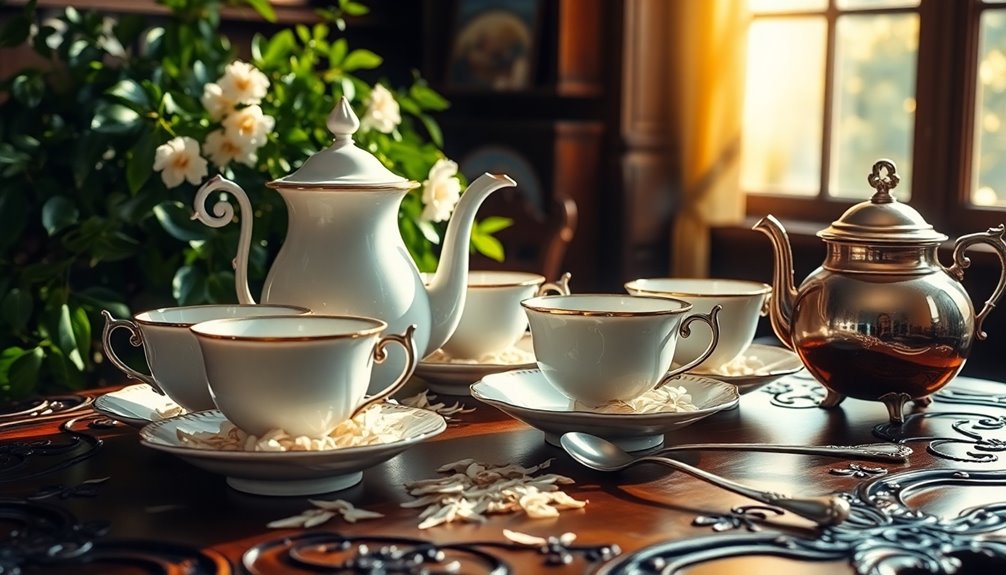
The journey of white tea through history reveals its deep-rooted significance in Chinese culture. You might be surprised to learn that white tea traces back to the Song Dynasty, where it was first discovered.
This tea wasn't available to everyone; it was an exclusive drink for royals, often served as a tribute to emperors by virgins wearing white gloves. This practice highlighted its luxury status, making it a symbol of purity and refinement.
Emperor Hui Zong of the Song Dynasty had a particular obsession with white tea, which led to the depletion of resources. This shows just how important white tea was in imperial culture.
During the Ming Dynasty, the tea production methods evolved, introducing loose leaf white tea as a tribute. This change in preparation not only made white tea more accessible but also embedded it deeper into the fabric of China's tea legacy.
Historical texts from the Ming Dynasty describe the careful techniques used in producing white tea, emphasizing its purity with sun-dried, unrolled leaves.
This rich history makes white tea truly special, connecting you to centuries of tradition and appreciation.
Limited Harvest Seasons
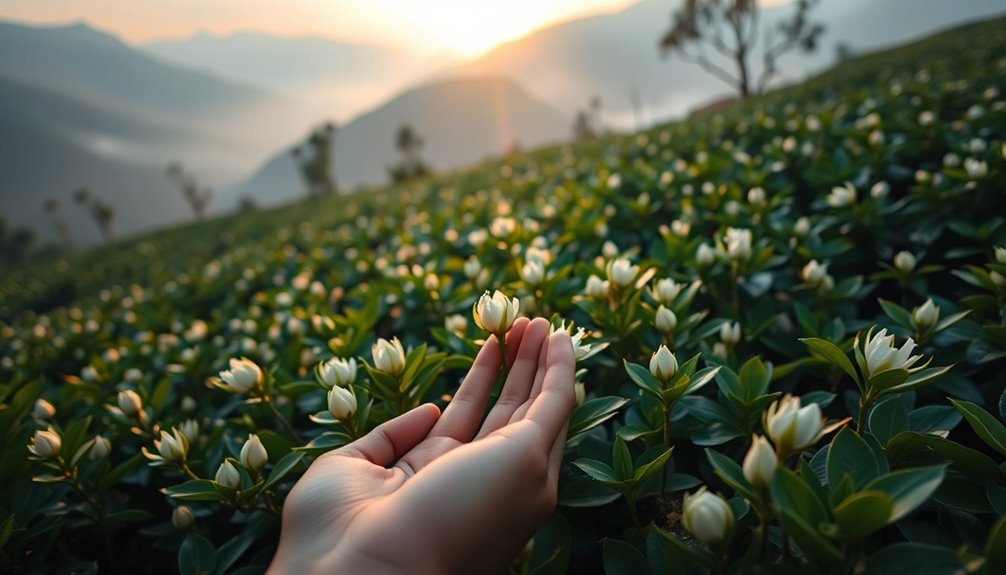
Harvesting white tea is a delicate and time-sensitive process that takes place mainly in the spring. This special season lasts only from late March to early April, so timing is everything.
You'll find that tea pickers collect the young tea leaves and delicate buds just before they fully open. This careful picking contributes to white tea's limited harvest seasons, making it an exclusive choice for tea connoisseurs.
Because of its minimal processing, only a small amount of high-quality white tea can be produced each year. This rarity adds to its charm, much like champagne.
The unique climate in Fujian province, where white tea is primarily grown, also limits when the tea can be harvested, ensuring that it maintains its reputation as a premium beverage.
When you sip on white tea, you're enjoying a product that's crafted with care and precision. The brief window for harvesting means that each cup you drink is part of a special tradition, connecting you to the artisans who nurture these delicate buds.
Rare Silver Needle Variety
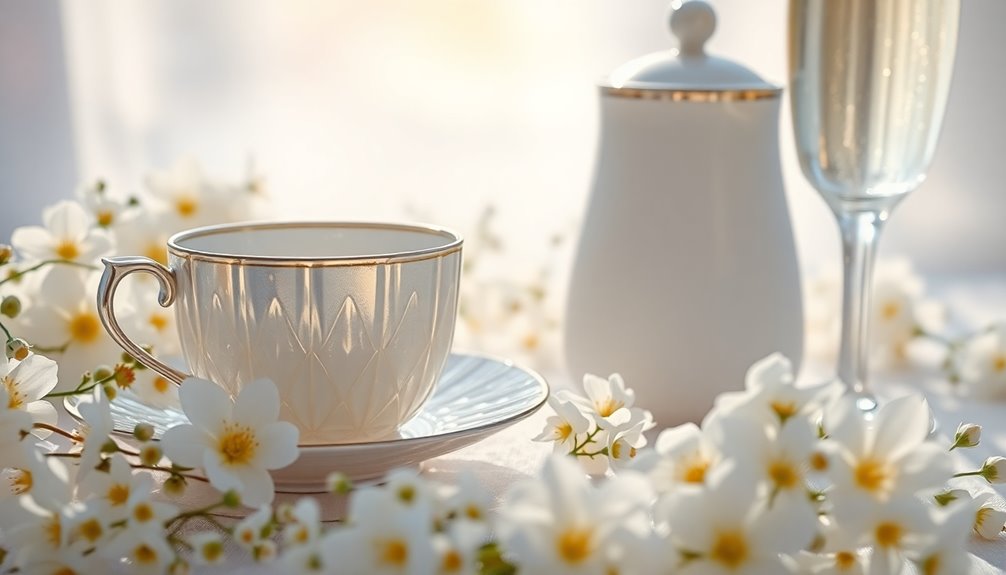
Among the various white tea varieties, Silver Needle stands out as one of the rarest and most prized options available. Known as Bai Hao Yin Zhen, this premium white tea is made exclusively from young, downy buds. These buds are hand-picked during the early spring harvest, ensuring only the finest selections make it to your cup. The delicate flavor profile is floral and sweet, providing a refreshing experience.
Silver Needle undergoes minimal oxidation, which helps preserve its natural flavors. When brewed, it produces a pale golden infusion with a light, woodsy body. Because of its labor-intensive harvesting process and limited production areas, this tea can command high prices, reinforcing its status as the "Champagne" of teas.
Beyond its exquisite taste, Silver Needle is celebrated for its health benefits. It contains high levels of antioxidants, making it one of the purest forms of tea you can enjoy today.
If you're looking to indulge in one of the rarest teas, Silver Needle is a wonderful choice that combines taste and wellness in every sip. Enjoy it as a special treat or share it with friends to impress them with its elegance!
Market Demand Fluctuations
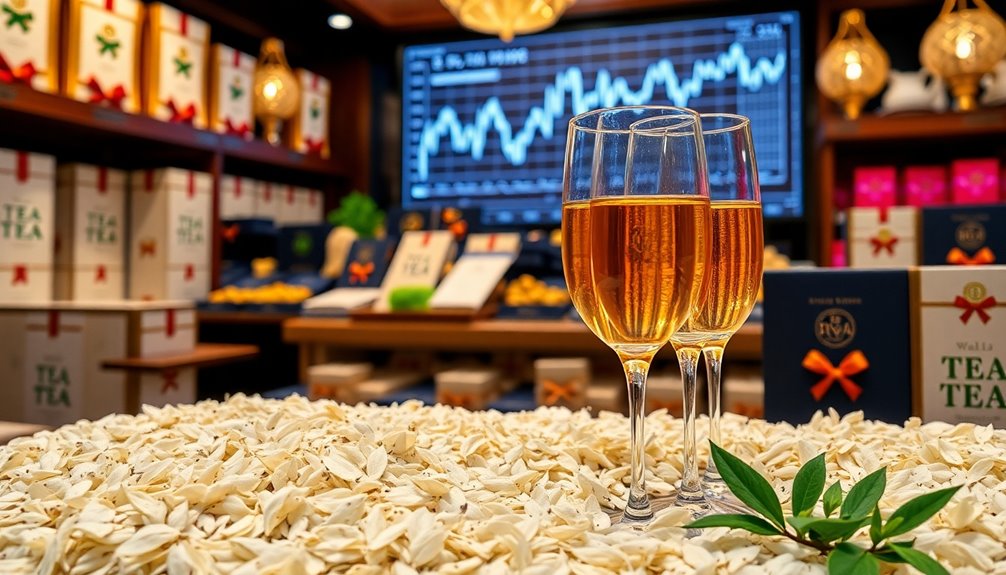
Market demand for white tea has surged in recent years, driven by its growing reputation for health benefits and premium quality. More and more people are discovering that white tea isn't just a drink; it's a lifestyle choice. This popularity means that you might notice higher pricing compared to other teas.
As consumers, you're seeking out natural, minimally processed products that fit into your health-conscious habits.
However, keep in mind that market demand can fluctuate. Seasonal variations in harvest yields can affect the availability of white tea, which in turn impacts pricing. When the harvest is low, prices can rise, making it a bit tricky to navigate.
The boom in specialty teas has also played a big role. White tea has found its way into gourmet food and beverage sectors, attracting those who appreciate fine flavors.
Plus, online marketplaces have made it easier than ever for you to explore different brands and qualities, further shifting market trends. Additionally, brewing time can influence the flavor and caffeine content, which contributes to the overall experience of enjoying this exquisite tea.
Practical Applications
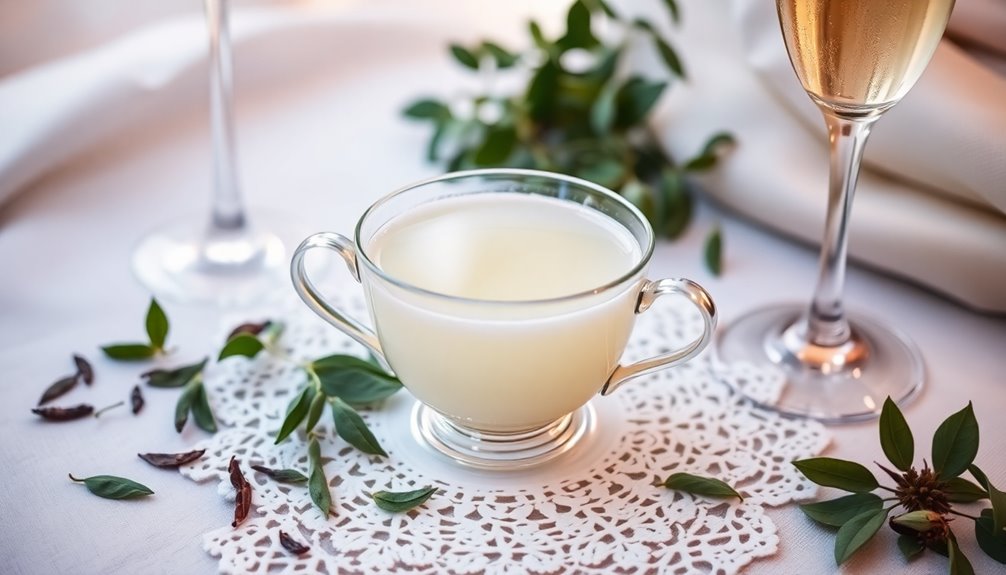
When you indulge in a cup of white tea, you're not just savoring a beverage; you're engaging in an experience that reflects its unique qualities and cultural heritage.
White tea, often dubbed the "Champagne" of teas, offers a delicate flavor that's truly special. Its minimal processing means you get to enjoy the freshest taste, much like a fine sparkling wine.
To make the most of your white tea, you'll want to explore its popular varieties, like Silver Needle and White Peony. Each has its own floral aroma and charm.
Plus, with lower caffeine content and higher antioxidant levels, you can sip on it guilt-free, knowing it's good for you.
Brewing techniques are key to unlocking the best flavors. Use water that's lower in temperature—around 160°F to 185°F—and steep for a shorter time, about 4 to 5 minutes.
This way, you'll get the perfect cup without bitterness. Treat your white tea with the same care as you'd a fine Champagne, and you'll discover a delightful experience in every sip.
Enjoy your journey into the world of white tea!
Frequently Asked Questions
What Is the Champagne of Teas?
The "champagne of teas" refers to a tea that's rare, delicate, and high-quality. When you savor it, you'll appreciate its refined flavors and the meticulous craftsmanship behind its production, much like enjoying fine champagne.
What Is Special About White Tea?
White tea's special because it's minimally processed, preserving its delicate flavors and aromas. You'll experience subtle notes of floral and honey, making each sip a refreshing, light choice that's perfect for any tea lover.
Is White Tea Healthier Than Green Tea?
While both white and green tea offer health benefits, you might find white tea healthier due to its higher antioxidant levels and lower caffeine content, making it gentler on your system while still promoting overall well-being.
How Many Cups of White Tea Should You Drink a Day?
You should drink 1 to 3 cups of white tea daily to enjoy its health benefits. This moderate intake keeps caffeine levels low while providing antioxidants, enhancing your overall wellness without overwhelming your system.
Conclusion
Now that you know why white tea is called the "champagne" of teas, you can appreciate its unique qualities. With its limited harvest, rare varieties like Silver Needle, and special place in history, white tea truly stands out. Next time you enjoy a cup, remember the care that goes into making it. So, go ahead and sip slowly, savoring each moment, and share your newfound knowledge with friends who might just join you in this delightful experience!

